Icy Inverts Cruise 2013 - Shipboard Blog - Jan 10th to Jan 13th
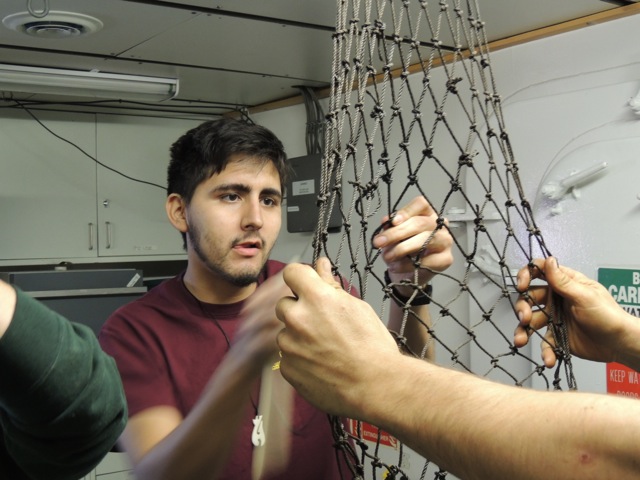
13 Jan 2013: Pass the Antarctic Circle – finally! (67o 47.3`S, 89o 09.4`W)
As a recent graduate of Central Michigan University, I can honestly say that this is the biggest adventure of my life so far. I've gone from Detroit, Michigan all the way to Punta Arenas, Chile and now I will soon be in Antarctica. We have been in transit for quite a while now, so far about twelve days, due to going back to Punta Arenas for a medical situation. Twelve days doesn't sound like a lot, but everyone seems to be very ready to start our sampling. I am most excited to see what we can catch in our nets (above picture). As a student researcher, my job mostly consists of assisting in processing samples between when they come on deck to when they are catalogued and preserved.
In trying to be as helpful as possible, I decided to attend a class on net repair that was generously provided by the marine technicians onboard (below picture). The idea of a net repair class was brought up at our last science meeting and given our long transit time, I was excited at the prospect of learning a new technique that could end up being very useful, especially if a net broke during of sampling. The net class consisted of some short video lessons, followed by actual demonstrations. We were shown how to fix little rips, and how to repair very large rips. Fixing nets is somewhat similar to sewing, but it involves some different types of knots. With the change in our schedule due to the return to port, we have had to change our working shifts around slightly. We will run two shifts of 12 hours to allow twenty-four (24) hours a day sampling operations. Any down time that can be avoided by mending nets between other sampling efforts, will be a really big help, and prevent us from losing more time.
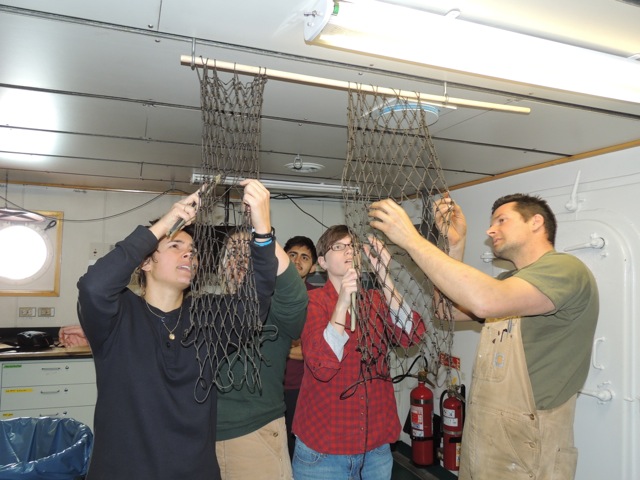
I took some time today to find boxes that we will need to package our samples so they can be transported back in to America. Will still have some more setting up to do, but it feels good to start working in preparation for our survey.
The most exciting part of the day was going outside and getting some fresh air, where I saw glimpses of icebergs over the horizon (below picture). We crossed the Antarctic Circle last night and it’s good to know that we are close to our destination. I've also never seen icebergs in real life, and I can't wait to see Antarctica up close!
Contributed by: Carlos Coronado, Student Researcher, Central Michigan University
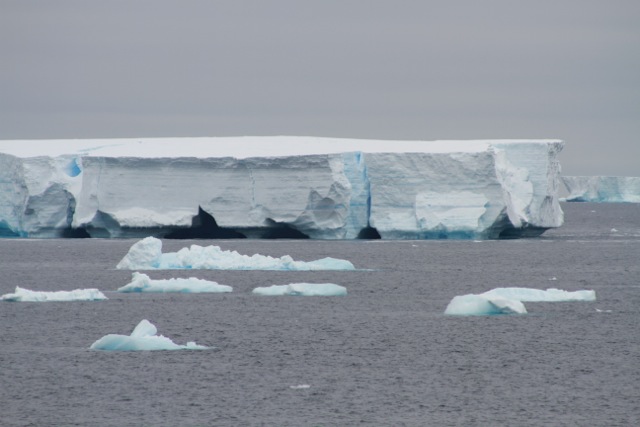
***************************************************************************************
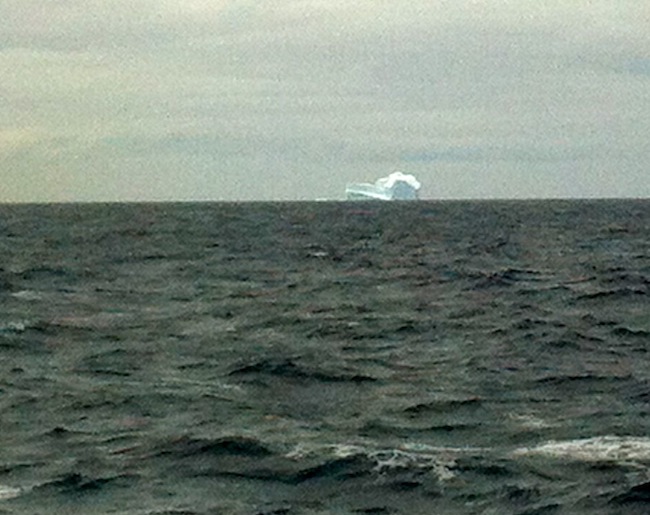
12 Jan 2013: Almost to the Antarctic circle (64o 30.2`S, 84o 41.4`W)
It’s funny how life takes you on unexpected journeys. For example, I would have never predicted that this research cruise would take us across the Drake Passage 3 times in 12 days! Certainly, as a teenager I would have never guessed that my love for biology would translate into a career studying an obscure phylum of marine worms known as nemerteans. I am always up for an adventure and love what I do, so heading to Antarctica to collect my animals, well to say I’m excited about this particular journey would be an understatement!
With our first sampling site only 35 hours away and the appearance today of icebergs on the horizon (above picture), it’s clear my shipmates are also getting excited and the lab is ready. Many of us are specialists on specific phyla of marine invertebrates (animals without backbones), and although we are quite familiar with the fauna of various tropical and temperate oceans closer to home, our collections from Antarctica will offer unique insight into the evolution and diversity of our beloved beasts. To us, these collections are valuable pieces of evidence for larger questions we have spent much of our research careers investigating. Now that we getting tantalizingly close to our first station and we can barely contain our excitement.
I’m particularly looking forward to our first stop in the Bellingshausen Sea; we will get close to a site that is the type locality of two species of nemerteans, or ribbon worms (examples in below picture). The original samples were collected long ago and not preserved for DNA sequencing. I hope to be able to obtain samples for molecular identification, which is increasingly important for accurately assessment of biodiversity. My research is primarily focused on nemertean phylogenetics and systematics using a variety of evidence to build hypotheses of evolutionary relationship and character change. Moreover, I am curious about how the Antarctic nemertean fauna fits into broader nemertean phylogeny. The places we are heading to are unknown and vastly understudied, so there is no doubt this particular journey will yield new and unexpected species; for a biologist like me, this is the stuff of our best dreams. So stay tuned, we start the real work very soon and will have many amazing animals to show off very soon.
Contributed by: Dr. Megan Schwartz, Postdoctoral Fellow, Natural History Museum, London
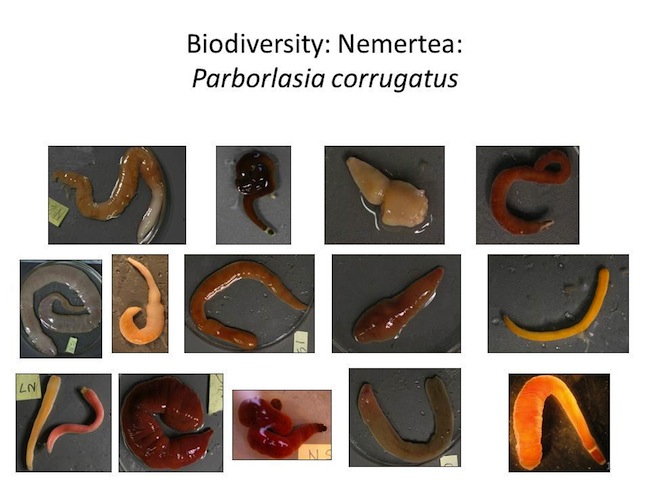
***************************************************************************************
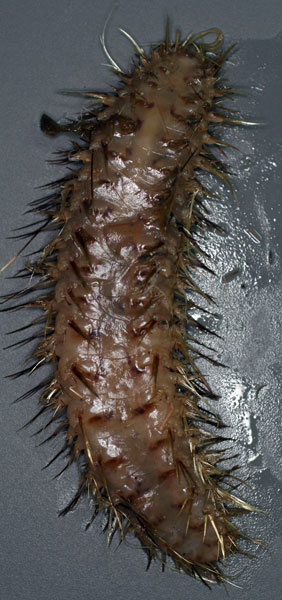
11 Jan 2013: Somewhere in the Southern Ocean (60o 46.7`S 80o 47.1`W)
Unlike most of the researchers on board, I have little experience with the fauna of Antarctica. With the exception of a short stint in Dr. Halanych’s lab working with the Antarctic scale worm, Laetomonice producta (above picture), most of my previous work has focused on crustaceans from the much warmer waters on the Hawaiian and Ryukyu Archipelagos in the Pacific.
While I will have plenty of opportunities to get my hands dirty sorting what comes up in the trawls, my main responsibility, along with David Branson, will be to map potential sampling sites using data collected during previous trips to Antarctica and from the on board Multi-Beam Sonar mapping system. As David previously mentioned (in the 04 Jan blog entry), this system uses sonar to map out the topology of the ocean floor where we will be sampling. Typical sonar systems work by sending out a single sound, or “ping”, and measuring how long it takes the “ping” to travel to an object, in our case the sea floor, and bounce back to the ship. By measuring how long it takes for sound to travel to an object and back and knowing the density of the water, we can determine how far away an object may be located. For us, the amount of time the “ping” takes to travel to the sea floor and back to the ship, gives an estimate of the depth at our current location. However, instead of sending out a single “ping” from the ship, the multi-beam system we will be using sends out multiple pings permitting us to map not only what is directly under the ship, but a large distance to either side of the ship. This allows us to map a greater portion of the sea floor in one pass. The result of this approach is a large amount of data that consists mostly of latitude and longitude coordinates as well as the depth at each coordinate. In the raw form, this data is not too helpful, but using various computer algorithms, we can transform the data into color topographical images of the area we wish to sample.
Because of an international agreement, we are not allowed to turn on any sonar equipment until we are outside Chilean waters. Maybe they are afraid we might find some of their submarines!! Given the restrictions, we have yet to use the multi-beam system, but should be able to actually start taking readings soon. For this trip, we are aiming to sample relatively flat areas along the continental shelf (areas roughly 400-800 meters deep) free of large rocks or other terrain that may damage our equipment. Pictured below is an example of a map that David and I generated using some of the multi beam data collected during previous research cruises of our first sampling site, Peter the First Island. As you can see, not much of the area around the island has been previously mapped.
Contributed by: Dr. David A. Weese, Postdoctoral Researcher, University of Michigan
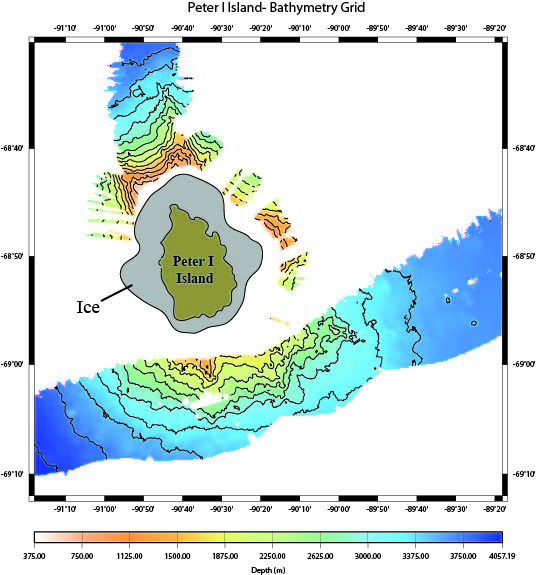
***************************************************************************************
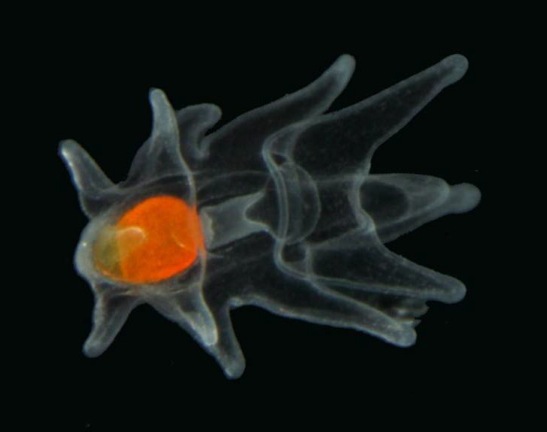
Above picture: A seastar larvae, in the the second stage (termed the brachiolaria) of larval development.
10 Jan 2013: Drake Passage (53° 23.4'S, 75° 19.6`W)
We’re heading south again, and are in the Drake Passage. If all goes according to plan, we should be on station and doing science sometime before the weekend is out. In the meantime, I wanted to begin blogging about some of the science we will be doing when we finally get to our sampling region in Antarctica.
One of the more interesting things we will be able to do on this cruise is to use plankton nets to collect larvae (above picture) from invertebrate organisms that are in the water column. Antarctic waters are reported to have a high percentage of endemic organisms. Many of these purported endemic species have been described as circumpolar (i.e., living in connected populations all the way around Antarctica). Although there has been considerable work on the general biology of Antarctic marine fauna and estimates of Antarctic biodiversity, there have been few studies focused on understanding genetic patterns. This includes asking the question of HOW these species keep up their genetic connections over the vast distances around the continent. It is thought that species that broadcast spawn their eggs/larvae into the water column should have a greater potential to disperse around the continent, simply because they are able to travel with the currents. We will be using the larvae that some of the species (e.g., some seastars, ribbon worms, etc.) release into the water column to attempt to make connections between the larvae and adult populations living on the bottom of the ocean.
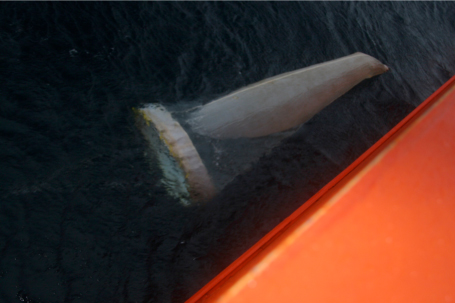
Now, how do we do this? Larvae will be collected using a plankton net (above picture) that we put over the side of the ship and lower into the water. After a few minutes of towing the net, we will bring the net aboard the ship, and those of us working on the larval aspects of our field collections will use microscopes to pick and sort through anything we collected during the plankton tow, looking for larvae of species we are interested in studying. Once sorted, we will photograph and preserve the specimens so that we can conduct genetic studies on them once we return our institutions. The larvae we collect are really quite stunning to look at, including those in the photos here (another in below picture).
More soon….
Contributed by: Dr. Andrew Mahon, Co-Principle Investigator, Central Michigan University
Below picture: A ribbon worm larvae, or pilidium, is one notable larval type among marine invertebrates.
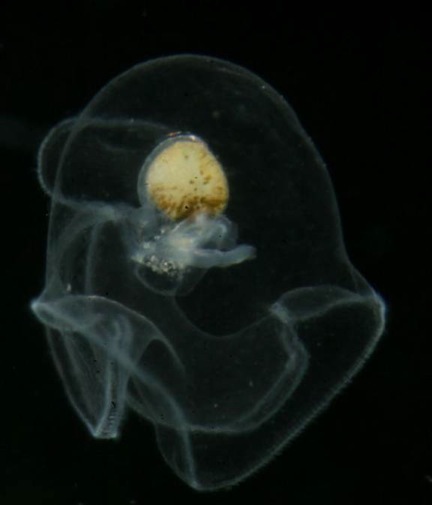
Last updated: 11/12/2013
